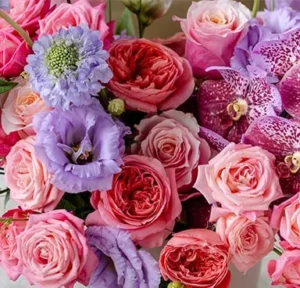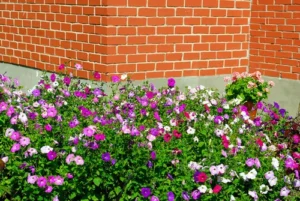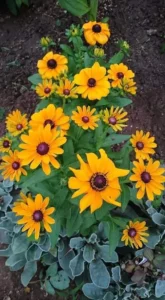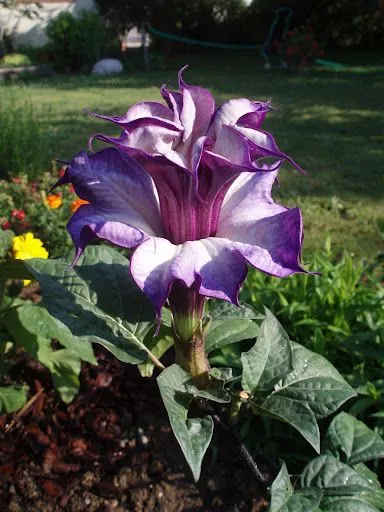A Comprehensive Guide to Growing, Cooking, and Enjoying Floral Flavors
1. Introduction to Edible Flowers
Edible flowers have been part of culinary traditions across cultures for centuries, adding color, flavor, and aesthetic appeal to dishes. From ancient civilizations to modern gastronomy, these flowers are prized for their unique flavors and nutritional benefits. This introduction sets the stage for exploring the diverse world of edible flowers, highlighting their culinary versatility and cultural significance.Beyond their visual appeal, these flowers add nuanced flavors and textures to dishes, elevating both everyday meals and gourmet creations. This introduction sets the stage by highlighting the cultural significance of edible flowers and their revival in modern gastronomy, appealing to chefs, home cooks, and gardeners alike.
2. Botanical Diversity and Selection
Edible flowers encompass a wide range of plant species, each offering distinct flavors and textures. From delicate floral notes to spicy undertones, these flowers vary in taste and culinary application. This section explores the botanical diversity of edible flowers, including popular choices such as roses, violets, and nasturtiums, as well as lesser-known varieties like borage and calendula. Tips for selecting edible flowers based on flavor profiles, seasonal availability, and garden suitability are discussed to guide culinary enthusiasts and gardeners alike.

3. Growing Edible Flowers: Cultivation Tips and Techniques
Successful cultivation of edible flowers begins with selecting appropriate varieties suited to local climate and soil conditions. Whether in garden beds, containers, or vertical gardens, these flowers thrive in well-drained soil enriched with organic matter. Practical advice on planting methods, spacing, sunlight requirements, and watering schedules ensures healthy growth and abundant blooms. Techniques for harvesting flowers at their peak freshness and preserving their flavors through drying or freezing are also covered, emphasizing sustainable gardening practices and culinary excellence.
4. Popular Edible Flowers and Their Culinary Uses
Edible flowers enhance both sweet and savory dishes with their vibrant colors and aromatic flavors. This section features a diverse selection of popular edible flowers and their culinary applications:
Roses Used in syrups, jams, and desserts for their delicate floral scent.
Nasturtiums: Peppery flavor complements salads, sandwiches, and savory dishes.
Calenduld: Adds vibrant color and mild tangy flavor to soups, salads, and rice dishes.
Lavender: Infuses teas, baked goods, and desserts with a fragrant floral taste.
Pansies: Decorate cakes, pastries, and salads with their bright colors and subtle minty flavor.
Borage: Refreshing cucumber-like taste enhances beverages, salads, and desserts.
VioDandelions: Petals and greens are used in salads, wines, and herbal teas for their bitterness and nutritional benefits.
Each flower is explored in detail, highlighting its unique flavor profile, culinary versatility, and creative uses in contemporary cuisine. Recipes and serving suggestions showcase innovative ways to incorporate edible flowers into everyday meals and special occasions, inspiring culinary experimentation and artistic presentation.
5. Nutritional Benefits and Health Considerations
Edible flowers are not only prized for their culinary appeal but also for their nutritional benefits. Rich in vitamins, minerals, and antioxidants, these flowers contribute to a balanced diet and promote overall health and well-being. This section examines the nutritional composition of select edible flowers, emphasizing their potential health benefits and culinary applications in promoting wellness. Considerations for allergies and sensitivities are discussed, along with precautions for consuming edible flowers safely and responsibly.Beyond their visual appeal, these flowers add nuanced flavors and textures to dishes, elevating both everyday meals and gourmet creations. This introduction sets the stage by highlighting the cultural significance of edible flowers and their revival in modern gastronomy, appealing to chefs, home cooks, and gardeners alike.
6. Cultural Significance and Symbolism
Edible flowers hold cultural significance in various traditions, symbolizing prosperity, celebration, and culinary craftsmanship. From ancient rituals to modern-day celebrations, these flowers play a symbolic role in festive foods, ceremonial drinks, and decorative arrangements. This section explores the cultural meanings and historical contexts of edible flowers, highlighting their role in cultural heritage and culinary storytelling across different societies and generations.
7. Culinary Trends and Innovations
The culinary use of edible flowers continues to evolve with contemporary gastronomic trends and innovations. Chefs and home cooks alike experiment with floral infusions, floral garnishes, and floral-inspired cocktails to elevate dining experiences and delight the senses. Emerging trends in edible flower cuisine, including floral ice creams, botanical cocktails, and flower-inspired confections, reflect a growing appreciation for floral flavors and artistic culinary expressions. This section showcases culinary trends and innovations that celebrate the versatility and creativity of edible flowers in modern cuisine.
By fostering sustainable gardening practices and encouraging hands-on cultivation, this section empowers readers to grow their own edible flower gardens and enjoy a continuous supply of fresh blooms throughout the growing season.

4. Popular Edible Flowers and Their Culinary Uses
Edible flowers enhance both sweet and savory dishes with their visual appeal and aromatic flavors. This section features a diverse selection of popular edible flowers and their versatile culinary applications:Edible flowers hold cultural significance in diverse traditions worldwide, symbolizing prosperity, celebration, and culinary artistry. From ancient rituals to modern-day festivities, these flowers play a symbolic role in festive foods, ceremonial drinks, and decorative arrangements. This section explores the cultural meanings and historical contexts of edible flowers, highlighting their role in cultural heritage and culinary storytelling across different societies and generations.
8. Gardening for Edible Flowers: Sustainable Practices and Urban Farming
Growing edible flowers at home or in community gardens promotes sustainable living and connects individuals with nature’s bounty. This section provides practical guidance on organic gardening practices, soil health management, companion planting, and water conservation techniques tailored to cultivating edible flowers. Tips for urban farming and vertical gardening solutions encourage urban dwellers to embrace gardening as a rewarding and eco-friendly culinary adventure.The culinary use of edible flowers continues to evolve with contemporary gastronomic trends and innovations. Chefs and home cooks alike experiment with floral infusions, edible flower arrangements, and botanical cocktails to elevate dining experiences and delight the senses. Emerging trends in edible flower cuisine, including floral ice creams, floral-inspired chocolates, and floral-infused oils, reflect a growing appreciation for floral flavors and artistic culinary expressions. This section showcases culinary trends and innovations that celebrate the versatility and creativity of edible flowers in modern cuisine, inspiring readers to explore new culinary frontiers.
9. Edible Flower Festivals and Events
Edible flower festivals celebrate the beauty and culinary potential of these floral delights, attracting enthusiasts, chefs, and gardeners from around the world. Events such as the Chiang Mai Flower Festival in Thailand, the Girona Flower Festival in Spain, and local farmers’ markets showcase diverse varieties of edible flowers in bloom. Culinary demonstrations, floral arrangement workshops, and garden tours offer immersive experiences for visitors to learn about edible flower cultivation, culinary techniques, and sustainable farming practices. This section highlights notable festivals and events that celebrate edible flowers as cultural treasures and culinary inspirations.
10. Conservation and Future Perspectives
Conservation of edible flower species is essential to preserving biodiversity and ensuring sustainable agricultural practices. Efforts to protect wildflower habitats, promote seed saving initiatives, and support local growers contribute to environmental stewardship and food security. This section explores conservation challenges and opportunities for preserving edible flower diversity, emphasizing community-based initiatives, educational outreach programs, and policy advocacy efforts. Future perspectives on the role of edible flowers in sustainable agriculture, culinary innovation, and global food systems underscore their potential to shape a more resilient and flavorful future.Growing edible flowers at home promotes sustainable living and connects individuals with nature’s bounty. This section provides practical guidance on organic gardening practices, soil health management, companion planting, and water conservation techniques tailored to cultivating edible flowers. Tips for urban farming and vertical gardening solutions encourage urban dwellers to embrace gardening as a rewarding and eco-friendly culinary adventure, fostering community engagement and promoting local food resilience.
11. Conclusion
Edible flowers continue to enchant culinary enthusiasts and gardeners alike with their vibrant colors, aromatic flavors, and nutritional benefits. From garden to table, these floral delicacies inspire creativity, promote wellness, and celebrate cultural traditions worldwide. This concluding section reflects on the enduring appeal of edible flowers as culinary treasures and cultural symbols, encouraging readers to embrace their beauty, savor their flavors, and cultivate a deeper appreciation for nature’s edible bounty. By exploring the diverse world of edible flowers, we discover new flavors, cultural traditions, and sustainable practices that nourish both body and soul.




